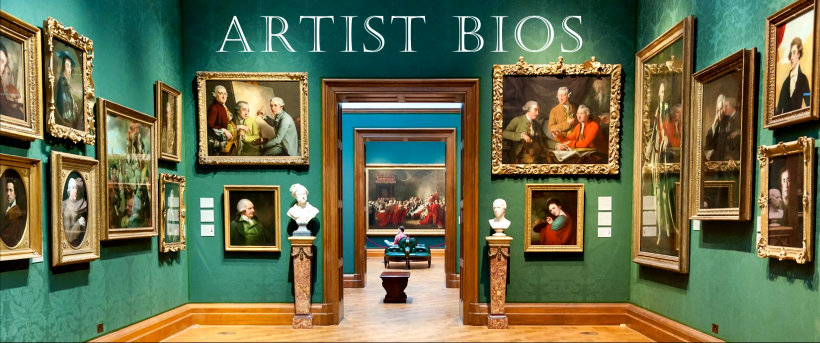GO TO: [A–C] [D–F] [G–K] [L–N] [O–R] [S–U] [V–Z]

Raised in New England by her Transcendentalist parents, Bronson and Abigail Alcott, Louisa knew such luminaries as Emerson, Thoreau, and Hawthorne. When her family encountered financial trouble, she began writing lurid fiction, like Jo March in her novel Little Women (1868), based upon her own family and three sisters. She was an abolitionist and feminist all her life, and never married. 10.
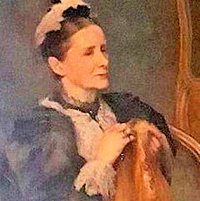
Born of an English family in Dublin, she began writing religious poetry in her teens, and in time became celebrated for her hymns, including "All things bright and beautiful," "Once in royal David's city" and "There is a green hil far away." She married an Anglican clergyman who became Bishop of Londonderry and Archbishop of Armagh, both in Northern Ireland. 2.
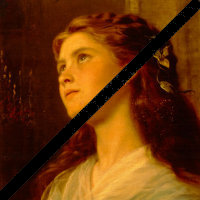
Born in Paris, Sophie emigrated with her parents to Cincinnati as a young woman, and there met her husband, the English genre painter Walter Anderson. She eventually settled in London with him, painting narrative subjects and idealized pictures of young women, one of which is shown here—it is not a self-portrait. 12.
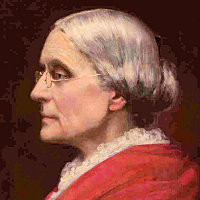
As a crusader in turn for Abolition, Temperance, and Suffrage, Anthony joined her organizational skills to the oratory of her friend Elizabeth Cady Stanton to make the formidable duo that eventually made the granting of the vote to women virtually inevitable, even though it did not occur until after their deaths. 10.
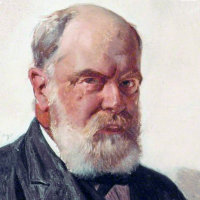
Armitage… "was an English Victorian-era painter whose work focused on historical, classical and biblical subjects." [Wikipedia] 7.
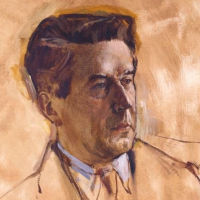
Like most choreographers, Sir Frederick Ashton began as a dancer, and continued performing even as his fame blossomed as a choreographer. He became artistic director of the Royal Ballet in 1963, but had worked with the company and its various predecessors since 1935, responsible for creating many of the works that are the foundations of English ballet today. 9.
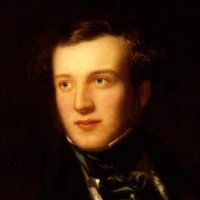
Balfe was born in Dublin and studied voice and violin. His singing career took him to Paris, Milan, and London, where he also began to get his own operas produced. The Bohemian Girl (1843), his greatest success (containing the air "I dreamt that I dwelt in marble halls") was produced in translation all over Europe, and even returned to London as an Italian opera! 9.
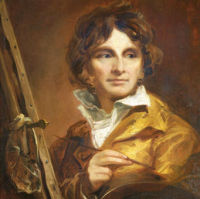
Born in Bath, the son of a minor painter, Barker moved to Paris in 1834 to study with Horace Vernet. After considerable success in France, he returned to England in 1845, becoming a fashionable portraitist and specialist in historical and battle pictures. His most famous picture, The Secret of England's Greatness (1863) is an icon of Empire, showing Queen Victoria handing a Bible to a kneeling Zulu chief. 7.
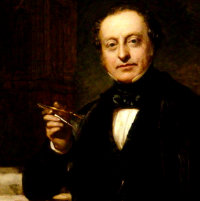
Barry's first commissions as an architect were for churches in the Gothic style, but his later buildings mostly used the classical style of the Italian palazzo as the basis for city buildings and country houses. The two styles met in his designs for the Houses of Parliament which, as his collaborator Augustus Pugin remarked, put "Tudor details on a classic body." 3.
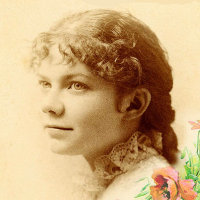
Her performing career as a child prodigy was curtailed by her marriage to a wealthy doctor, and for a long time she published her compositions under the name "Mrs. H.H.A. Beach." Most of her numerous works are small in scale, but her Gaelic Symphony of 1896 was the first symphony published by a woman in America. 4, 9.
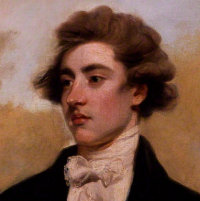
Author, designer, Member of Parliament, reputedly the richest commoner in England (through the slave trade), and a certified eccentric, Beckford built the huge Gothic extravaganza Fonthill Abbey, a suitable background for his 1786 novel Vathek. It soon collapsed, but it put Gothic on the cultural map. 3.
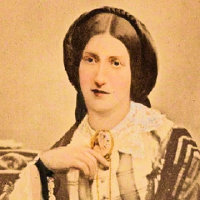
Despite her short life, Mrs. Beeton (as she is universally known) achieved immortality, at least by reputation, as the author of the Book of Household Management in 1861, which not only offered recipes and guides to every aspect of good housekeeping, but also laid down the proper conduct of everybody in the household, from mistress to servants. 10.

A leading member of the Ashcan School, and known for his scenes of city life and boxing, Bellows was a pupil and close associate of Robert Henri. At 27, he was the youngest artist ever to be elected to the National Academy of Design. 11, 12.

One of the original Beyond the Fringe quartet (with Peter Cook, Dudley Moore, and Jonathan Miller), Bennett turned to writing plays such as The Madness of King George (1972) and The History Boys (2005), which have been performed at the National Theatre and worldwide. 1.
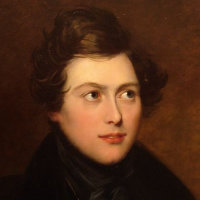
As a young pianist at the Royal Academy of Music, Bennett's compositions attracted the attention of Felix Mendelssohn, who took him to Germany and introduced him to Schumann; he spent three years in Leipzig before returning to London where his compositions (though Germanic in manner) attracted much attention. He remained an important figure in British musical life, his pupils including Hubert Parry and Arthur Sullivan. 2, 9.
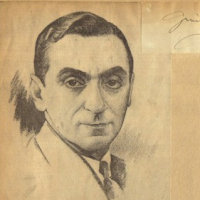
Berlin (b. Israel Beilin) arrived in the US from Russia at the age of 5. Although he could not read music and could barely play, he wrote over 1,500 songs with the aim, in his words, "to reach the heart of the average American." With hits like "Easter Parade," "White Christmas," "God Bless America," and the musical Annie Get Your Gun (1946), one might say he succeeded. 7, 8.
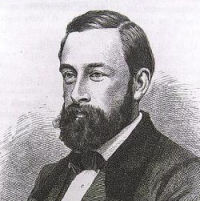
Born in Germany, but living mainly in New York. Although a member of the Hudson River School, he became the painter par excellence of the American expansion to the Rockies and beyond. 2, 7.
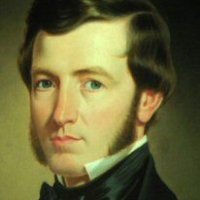
Originally a tanner by trade, he became one of the first American-born composers, essentially self-taught, writing hymns, somewhat more complex "fuguing tunes," and patriotic songs. 1, 9.
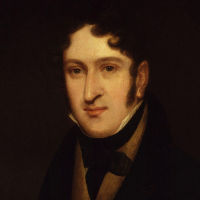
'Sir Henry Rowley Bishop was an English composer from the early Romantic era. He is most famous for the songs "Home! Sweet Home!" and "Lo! Hear the Gentle Lark." He was the composer or arranger of some 120 dramatic works, including 80 operas, light operas, cantatas, and ballets. [He was also] Professor of Music at the universities of Edinburgh and Oxford.' [Wikipedia] 9.
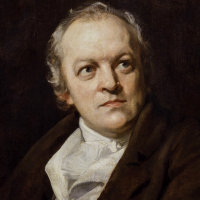
His work spans the late classical and early romantic periods, but his style in each of his many media is sui generis and infused with a strongly mystical bent. 4.
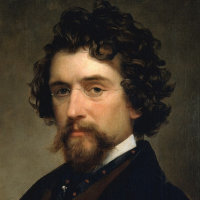
Born in upstate New York, Brady studied under inventor Samuel Morse, who pioneered the daguerreotype technique in America. He opened his own studio in 1844, and went on to photograph U.S. presidents John Quincy Adams, Abraham Lincoln, and Martin Van Buren, among other public figures. When the Civil War began, Brady's use of a mobile studio and darkroom enabled thousands of vivid battlefield photographs to bring home the reality of war to the public. [Wikipedia] 4.
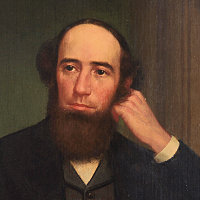
Bristow's father was a professional musician, who taught him to play several instruments along with harmony, counterpoint, and orchestration. While still in his teens, he joined the NY Philharmonic as a violinist and remained with them for 35 years, rising to concertmaster. Meanwhile, he also conducted two choral societies and was active in establishing a music curiculum in public schools. His five symphonies all have extra-musical subjects. 9.
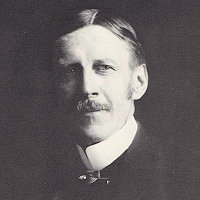
Brooke trained at the Pennsylvania Academy of Fine Arts, but made several extended visits to France to absorb the realist painters there. Back home, now mainly in Washington DC, he specialized in subjets from African American life, making a point that such a rich fount of humanity and humor should be treated with respect rather than caricature. 6.

Although he was never a formal member of the Pre-Raphaelite Brotherhood, Ford shared their belief that art should be true to nature and morally edifying. His best-known works are The Last of England (1855) and the large street scene Work (1863). 11.

Elizabeth Barrett had established herself as a poet well before she met Robert Browning, whom she eventually married at the age of 40, and was disinherited by her father for doing so. Her sequence of love-letters to Browning, Sonnets from the Portuguese (1850) have been widely influential. 4.
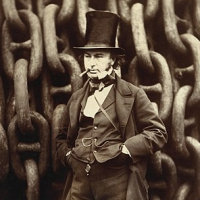
Brunel is credited with altering the face of England more than any other engineer of the Industrial Revolution, creating railroads, tunnels, bridges, stations, and the first transatlantic steamer. Among his most notable works are the Clifton Suspension Bridge and Paddington Station. 3.
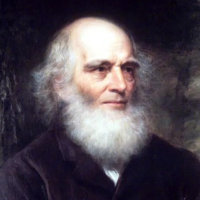
Born in a log cabin in Massachussetts, Bryant rose to become editor of the New York Evening Post and one of the most popular poets of his time. His style, by no means innovative, was easy to understand, drawing many readers to his themes of the divine in nature and the continuity of life. He was a close friend of Thomas Cole. 2.

Taking the Pre-Raphaelite style into a new phase, he specialized in elegant rather ethereal treatment of mainly literary subjects. He was a close friend of William Morris, and collaborated with him on several projects. 12.
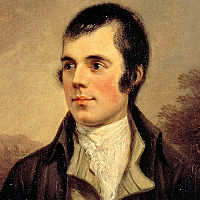
Rabbie Burns is often regarded as the national poet of Scotland, where his birthday (1/25) is an occasion for the often-drunken singing of his many songs. His manner as "peasant-poet" was largely assumed; he was in fact quite well educated, and held his own with other figures of the Scottish Enlightenment. He wrote mainly in a Scottish dialect, but it is mostly intelligible to non-Scots. 1, 2, 4.
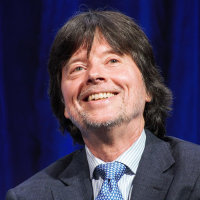
Burns' documentaries such as The Civil War (1990), Baseball (1994), and Jazz (2001), pioneered a singlar style combining expert interviews with old photographs brought to life with the camera—a pan-and-zoom technique that is now commonly known as "the Ken Burns effect." 1.
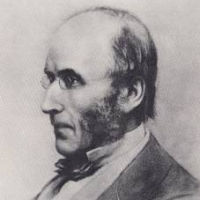
Butterfield's church of All Souls, Margaret Street, London (1850) established him as the chief architect of the high-church Oxford Movement, to which he responded by creating his own style of historically eclectic High Gothic. In his later buildings such as the chapels at Keble College Oxford and Rugby School, he used Sienese-inspired stripes of polychrome stone, facetiously dubbed the "holy zebra style." 3.
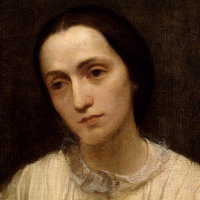
Julia Margaret Pattle was born in British India, and remained there until her mid-forties as a society hostess until her husband retired to England in 1845. In 1863, when she was 48, she received a box camera as a Christmas present from her daughter, as "something to amuse her." Indeed it did, and she became famous for her portraits of famous sitters, such as her neighbor Tennyson, and inventive restagings of literary works. 10.
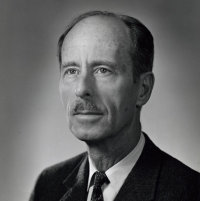
An alumnus of the Eastman School and later a professor there, Canning had a distinguished career as a composition teacher. His own works include collaborations with Robert Frost and William Carlos Williams and the much recorded Fantasy on a Hymn Tune by Justin Morgan, written in response to Vaughan Williams' Tallis Fantasia. 2.
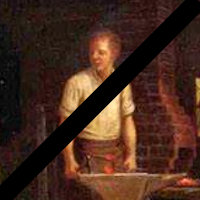
Carr trained in England then moved to the US in 1862, settling in Brooklyn. He specialized in genre scenes and landscape. [The image is by Carr, not of him.] 11.
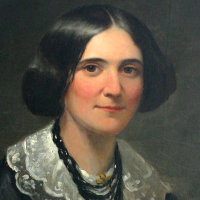
Although receiving little formal education, Alice and her younger siser Phoebe (b.1824) began publishing in local newspapers in their teens, and in 1849 moved to New York where they established a literary salon. She also wrote three novels and three books of short stories. 5.
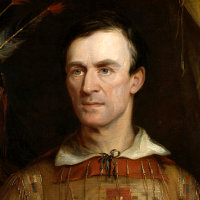
Catlin practiced law in Philadelphia before taking up painting; he was entirely self-taught. He is best known for his numerous depictions of Native Americans, and would spend large parts of each year staying in their camps as an honored guest. 7, 9.
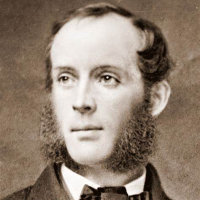
A pupil of Thomas Cole, Church was (with Bierstadt) the outstanding landscapist of the second generation of the Hudson River School. He was attracted to highly dramatic subjects, such as his Niagara, which made him famous, and traveled to the Andes and Middle East in search of them. 2, 9.
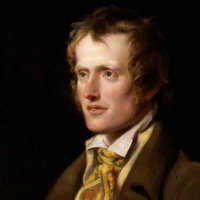
The son of an agricultural laborer, Clare worked the land himself. Leaving school at age 12, he nonethless continued to read as much as he could and write about his experience of rural life. His first book of poems found their way to Keats' publisher; their publication in 1820 with a further volume in 1821 made him instantly famous, but he passed through alcoholism into madness and ended his life in a mental hospital. 2.
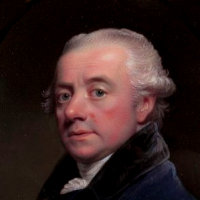
Clark was a Scottish aquatint engraver and painter of seascapes and landscapes. He was also known as Waterloo Clark, because of the sketches he made on the field directly after the Battle of Waterloo. [Wikipedia] The portrait is dubious. 4.
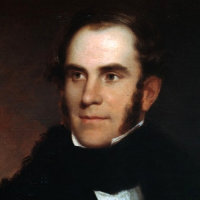
A founder of the Hudson River School, Cole painted real landscapes, fantasy landscapes illustrating a theme, and occasional pictures such as The Oxbow (1836) that combined both. Towards the end of his career, he turned to grand historical and allegorical themes, of which The Course of Empire was one. 2, 7.
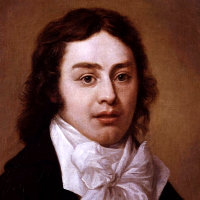
With the joint publication of the Lyrical Ballads with Wordsworth in 1798, Coleridge co-founded the English Romantic movement. He went his own way in later years , however, exploring the more fantastic aspects of Romanticism with works like "The Rime of the Ancient Mariner" and "Kubla Khan." He became addicted to opium. 2.
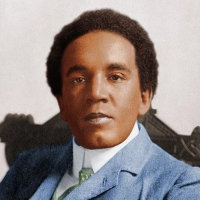
Son of a physician from Sierra Leone and an English mother, he studied at the Royal College of Music with Stanford. His compositions had some modest international success, but none to match the acclaim given to his three cantatas based on Longfellow's Hiawatha. 7.

Collier was a highly successful portraitist and painter of scenes from life, often with a "puzzle picture" element. He was connected through both his marriages to the family of Thomas Huxley, President of the Royal Society. 8.

Even more than his contemporary Turner, Constable was the leading English landscape painter of the 19th century. Living in East Anglia, he was influenced by the Dutch landscapists painting very similar country. He made numerous outdoor sketches of clouds and trees, with free and brilliant handling of paint, but reverted to a more sober style in his paintings for exhibition. 2.
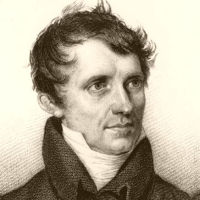
Cooper grew up in Cooperstown NY, a community founded by his father. After being expelled from Yale, he served first as a merchant seaman and then in the US Navy. The reputation of his large literary output, once much admired both at home and abroad, now rests mainly on his five Leatherstocking Tales, especially The Last of the Mohicans (1826). 5, 7.
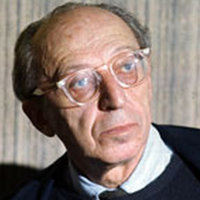
Trained in Paris, Copland began writing in the style of the European avant garde, but in his ballet commissions in the 1930s and 1940s, such as Billy the Kid, Rodeo, and Appalachian Spring, he developed the open folk-inflected style that has become, for many people, the sound of American music. 1.
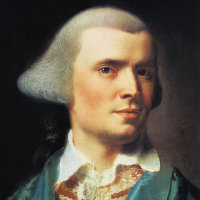
Born probably in Boston, Copley esatablished himself as a portrait painter befor moving permanently to London at the age of 36. He cemented his reputation with a number of history paintings such as Brook Watson and the Shark (1778), The Death of Chatham (1781), and several Revolutionary War scenes shown from the British perspective. 1.
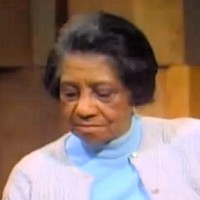
Cotten (née Nevins) taught herself to play the guitar in an idiosyncratic left-handed style, writing her own songs and playing mainly in church. For most of her life she worked as a domestic servant, and did not begin professional performance until she was 60 and working for the well-known Seeger family of musicians, who encouraged her. 4.
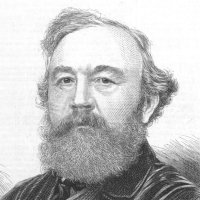
Crowe made a living painting mainly genre scenes of society life. But a trip to the US in 1852 as secretary to William Makepeace Thackeray opened his eyes to the realities of slavery, and the drawings and paintings he made from that time contrast with the rest of his work. 6.
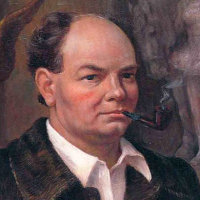
One of the leading figures of the Midwestern Regionalist movement in the interwar period, Curry painted scenes from his home state of Kansas, and patriotic pictures for the government in WW2. 6.
GO TO: [A–C] [D–F] [G–K] [L–N] [O–R] [S–U] [V–Z]
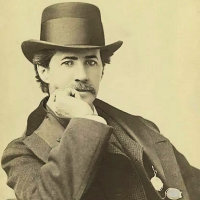
The author of the iconic melodrama Under the Gaslight (1867), Daly was also an impresario and stage director, exercising a strict control over his companies, running both in New York and London. 11.
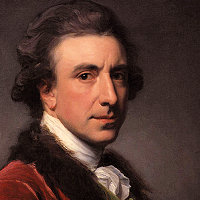
The son of an architect, Dance established himself as a society portrait painter, whose subjects included David Garrick, Captain Cook, and George III. In later life he entered politics and was made a baronet under the title of Sir Nathaniel Dance-Holland. 1.
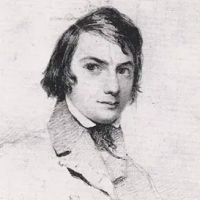
Deas became quite famous in his twenties for his highly dramatic paintings of Native Americans, fur trappers, and other frontier figures. He was committed to a mental asylum at age 30, and spent the remainder of his life there. 7.
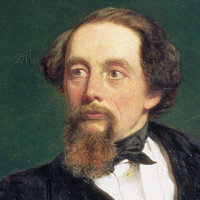
Dickens wrote 15 novels, several novellas, and numerous stories. Many of these were originally published in serial form, enabling him to build a large and eager readership, and to shape his work in response to public opinion. He also edited several magazines over the course of his life, and sponsored the work of other writers. A lifelong reformer, he increasingly devoted his time to political writing, lecture tours, and readings of his own work on both sides of the Atlantic. [The image is a detail of a portrait by Frith.] 5.
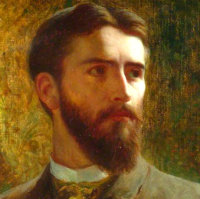
Sir Francis Bernard Dicksee was the son, brother, and cousin of successful painters. Like his father, he had a particular interest in literary and historical subjects. He became President of the Royal Academy in 1924. 12.

The most celebrated illustrator of the mid-19th century, his fame rests on the romanticism and drama of his treatment of subjects ranging from the Bible to Dante's Inferno and Coleridge's Ancient Mariner. 2.

Dove, who spent some time in France in the ferment of the first decade of the century, is credited with painting the first abstract pictures in America, although he did not exhibit them at the time. 12.

Dowson's parents both killed themselves while suffering from tuberculosis, and he himself was tragically short-lived, dying in poverty. A poet associated with the Decadent movement, he is remembered mainly for two phrases: "Days of wine and roses" and "I have been faithful to thee, Cynara, in my fashion." 12.
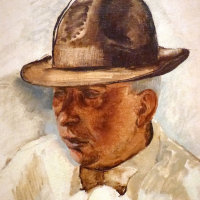
Dreiser was a journalist and realist novelist best known for Sister Carrie (1900) and An American Tragedy (1925). His novels feature characters who abandon traditional moral codes; they themselves may succeed, but they leave tragedy in their wake. 12.
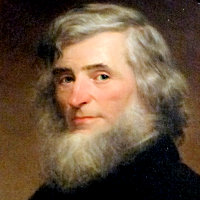
Durand began as an engraver, and his reproduction of John Trumbull's Declaration of Independence brought him fame, including commissions for US banknotes. Around 1830, he decided to devote himself to painting, readily finding a place among the artists of the Hudson River School, although his engraving background still shows in his precise rather than painterly treatment of detail. 2.
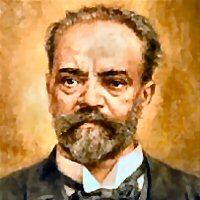
The best known of Czech composers, Dvorak composed nine symphonies and numerous chamber works. From 1885 to 1888, he was director of a new conservatory in Manhattan; he later became director of the conservatory in Prague. Of his ten operas, only the fairy-tale Rusalka (1901), a variant on the Little Mermaid story, has had true international success, cropping up in an astonishing range of productions in the last few decades. 9.
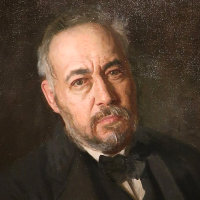
Philadelphian Thomas Eakins is now counted among the greatest American-born painters of the 19th century, but in his day he was ridiculed for his insistence of realism in his portraits and scenes from everyday life. His legacy lives on, however, in the work of the Ashcan School and other painters at the turn of the century who began to give American art a distinct national style. 9, 12.
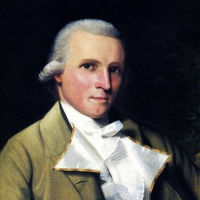
A self-taught portraitist and British loyalist, Earl moved to England during the War of Independence, breaking with his father, who was a colonel in the revoltutionay army. This did not stop him from returning to America after the war ended, however, and resuming a modestly successful career. [The portrait here, though by Earl, may not be of him.] 1.
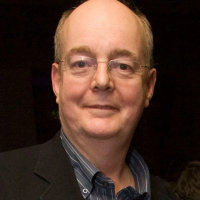
Best known for his 9-hour adaptation of Dicken's Nicholas Nickleby for the Royal Shakespeare Company in 1980, Edgar has enjoyed a long career writing political or socially-activist plays that have been performed everywhere from the National Theatre to lunchtime street venues. 5.
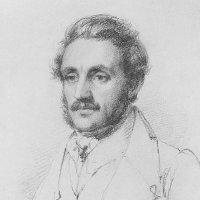
Edmonds had dual careers as a banker and a painter of American genre subjects influenced by Dutch art of the Golden Age. 8.
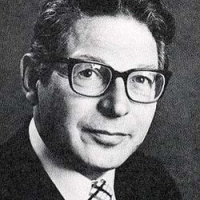
A jazz pianist and songwriter, Edwards is remembered for his one big hit, the musical 1776, for which he wrote the original book, lyrics and music. It is about the events leading up to the Declaration of Independence. 1.
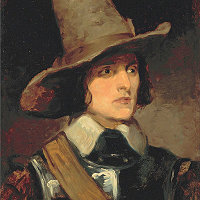
A close friend of Charles Dickens (who described him as "a dear, gentle litle fellow"), Egg favored literary and historical subjects. His most famous work, the morlizing triptych Past and Present (1858), is something of a departure, closer to the work of the Pre-Raphaelites. [The image is a detail of a portrait of the artist in 17th-century costume by Richard Dadd.] 8.
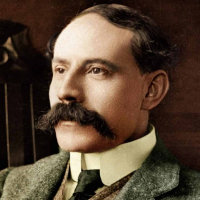
Elgar was the leading figure in English music during the late Victorian and Edwardian eras. With works such as the Enigma Variations and his concerti for violin and cello, he was one of the first English composers after Purcell to achieve an international reputation. 7, 9, 12.
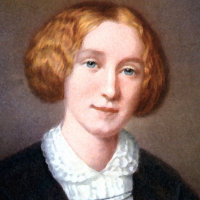
"George Eliot" was the pen name of Mary Ann Evans, under which she published seven novels generally regarded as among the greatest in English literature; Virginia Woolf described Middlemarch (1872) as "one of the few English novels written for grown-up people." Her writing is notable for its realistic portrayal of English social life and its acute psychological insight. 8.

The leader of the Transcendentalist movement, Emerson made his mark through speeches, essays, and poetry. He began as an ordained Unitarian pastor, but left the church to develop his belief of the immanence of God in Nature and Mankind. 2.
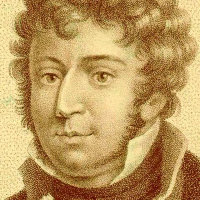
Born in Dublin, he made his début in London at age 9, and then came under the wing of Muzio Clementi, less as a pupil than an agent for his pianos, going with him all around Europe. He settled in St. Petersburg in 1803, where he spent the rest of his career. He is credited with inventing the piano Nocturne and thus influencing the music of Chopin and others. 9.
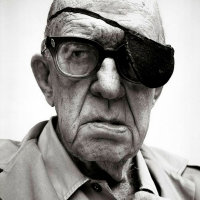
Ford (real name Feeney) was one of the most important directors in the middle decades of the century, making over 140 films and receiving 6 Oscars. He "made frequent use of location shooting and wide shots, in which his characters were framed against a vast, harsh, and rugged natural terrain" [Wikipedia]. 8.
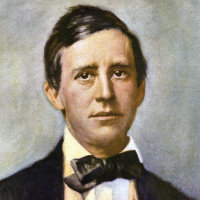
Although associated with the antebellum South, Foster was born near Pittsburgh, and visited the South only once, on his honeymoon. But he made liberal use of Southern traditions and dialect in the numerous songs he wrote for minstrel shows, many of which have become folk songs in their own right. Contrasted with these are his sentimental ballads such as "Beautiful dreamer" and "I dream of Jeanie with the light brown hair," which show his remarkable gift for melody. 9.

A military enineer by profession, Fowke goes down in history as the primary designer of two iconic landmarks of Victorian South Kensington: the Natural History Museum (1864) and Royal Albert Hall (1867). His early death, however, meant that these were both taken over by other architects: Alfred Waterhouse and Henry Scott. 3.

A poet, composer, and performer, French wrote numerous gently comical songs such as "Phil the Fluter's Ball" and "The Mountains o' Mourne" which have entered the Irish repertoire almost as though they were folksongs. 11.
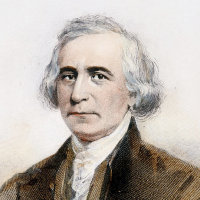
At Princeton, Freneau was a friend of James Madison who, with Jefferson and others, supported his editorship later in life of the anti-Federalist newspaper, The Partisan Gazette. His earlier career during the War (including a stint as a sailor and subsequent capture by the British) gave background to his satirical and polemical pieces, earning him the unofficial title of "Poet of the Revolution. 1.
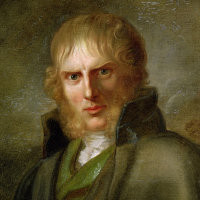
The greatest German Romantic painter and a truly original visionary, he conceived images based on unconventional views of nature with strong, albeit enigmatic, moral implications. 2.
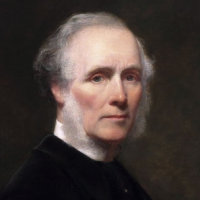
Frith began his career as a portrait painter (his subjects including Charles Dickens), but branched out to literary and genre subjects and the vast panoramas of contemporary life such as Derby Day and Railway Station that became his best-known legacy. 3, 11.
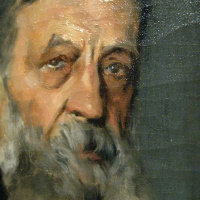
"Fry was the first known person born in the United States to write for a large symphony orchestra, and the first to compose a publicly performed opera.[1] He was also the first music critic for a major American newspaper, and he was the first known person to insist that his fellow countrymen support American-made music." [Wikipedia] 2, 9.
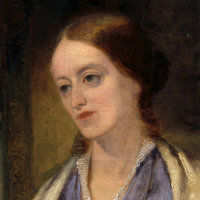
A prodigious intellect known when barely in her thirties as “the best-read person, male or female, in New England,” Fuller was the first woman to be permitted to use the Harvard library. Emerson appointed her as the first editor of his Transcendantalist Journal, The Dial, in which she published her 1843 book Woman in the Nineteenth Century, now hailed as the first great work of American Feminism. Fuller went on to make her living as a journalist, writing for the New York Post, which sent her to Europe to cover the Italian War of Independence. 10.
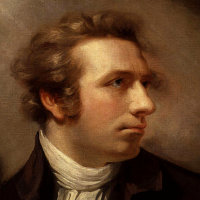
Born Heinrich Füssli in Zurich, he originally trained for the church, but spent most of his life in exile. He originally supported himself as a writer, but Sir Joshua Reynolds advised him to devote himself entirely to art. His bold hyper-dramatic style had a great influence on younger artists, including William Blake, and his interest in supernatural subjects would make him an important precursor of Romanticism. 2.
GO TO: [A–C] [D–F] [G–K] [L–N] [O–R] [S–U] [V–Z]

The daughter of a Unitarian minister who gave up his position in the North for reasons of conscience, Mary Stevenson married another minister, who moved to Manchester, which became the disguised setting for North and South (1855). She published this, its predecessor Cranford (1853), and a biography of Charlotte Brontë (1857) under the name "Mrs Gaskell," but used a pseudonym before that. 4, 10.

Gast emigrated with his family from Berlin as a child. He is best known for his painting American Progress (1872), an iconic expression of Westward Expansion. [There is no portrait available; this is another person of the period.] 7.
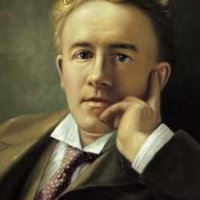
Born German Edward Jones to a Welsh family in the West of England, he took his given names as a nom de plume when he began to achieve success as a composer of incidental music for the theater and light operas in the Gilbert-and-Sullivan vein, such as Merrie England (1902). 12.

The author of many straight plays as well, Gilbert gained lasting fame as the librettist and theatrical genius behind the 14 operettas ("Savoy Operas") written with Arthur Sullivan between 1871 and 1896. These became almost as popular in America as the were in Britain. 9.

Yorskuire-born Gillam was an American political cartoonist, associated with Judge Magazine for 20 years. His best-known work covers the campaign and presidency of William McKinley. 7.

Beginning as a newspaper illustrator, Glackens was encouraged by Robert Henri to take up painting, and became a central figure in the Ashcan School and in 1913 an organizer of the Armory Show. His subject matter was realist, but in style he was much influenced by French Impressionists such as Renoir. 11.
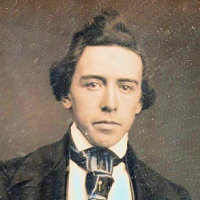
Starting as a child prodigy in New Orleans, Gottschalk basically composed pieces to show off his own skills. Although rejected by the Paris Conservatoire, he made a name for himself there, impressing other virtuosi such as Liszt and Chopin. Even when he returned to the Americas, he spent most of his life in the Caribbean and Latin America, whose musics he embraced in his own. 9.
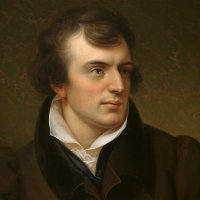
Greenough originally pursued an academic interest in the classics, studying at Harvard. During an extended stay in Rome with the painter Washington Allston, he became active as a sculptor in a classical style, leading to commissions at the US Capitol and elsewhere upon his return. 7.
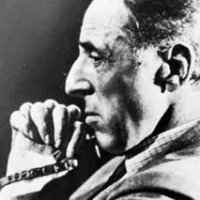
David Wark Griffith is honored as one of the giants of the early film industry. He was an innovator in film editing, and greatly expanded the range and complexity of cinema narrative. His 3-hour 1915 film The Birth of a Nation was simultaneously hailed as a masterpiece of the art and a racist invective that led to riots. All but three of the roughly 500 films were silent. 6.
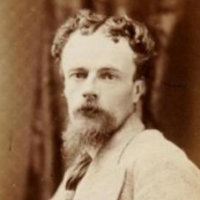
Although painting some literary subjects such as The Lady of Shalott, Grimshaw specialized in urban nocturnes, painting, in the words of one critic, "the rain and mist, the puddles and smoky fog of late Victorian industrial England with great poetry." 12.
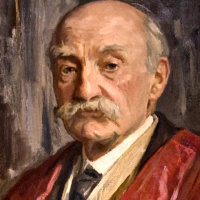
Although thinking of himself primarily as a poet, Hardy is most often remembered as the author of pastoral realist novels set in "Wessex," his name for a large swath of Southwest England, the country that he loved. While Far From the Madding Crowd ends happily, more of his novels have an elegaic pessimism that is found also in his verse. 8.
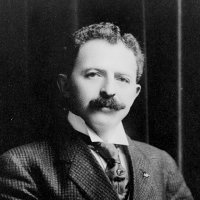
Harris's 1892 song "After the Ball" became a runaway success. He ploughed his huge profits into setting up his own business as a Tin Pan Alley publisher, writing over 300 songs, but none achieving the same sentimental appeal. 11.
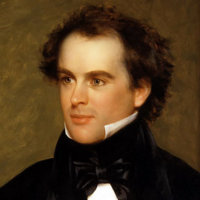
His 1850 novel The Scarlet Letter is an American classic, addressing (among other things) the role of religion and personal freedom in American life. Many of his earlier stories have similar depths of symbolism and moral enquiry. He also wrote A Wonder-Book for Girls and Boys (1851), consisting entirely of retellings of Greek myths. 5, 8.
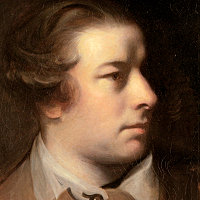
Hayman began as a theatrical scene-painter, and later painted a large series of illustrations to Shakespeare. He was a founding member of the Royal Academy and its first librarian. 7.
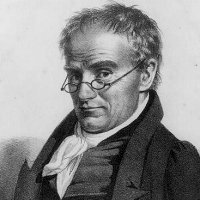
Heinrich was born in Bohemia, but came to America as a young man to stay with an uncle in Boston. When his uncle became bankrupt, he traveled by foot and canoe through the wilderness into Kentucky, where he settled into a log cabin and began to compose "some of the most original, if not strange, program music of the nineteenth century" [Wikipedia]. 2, 4.
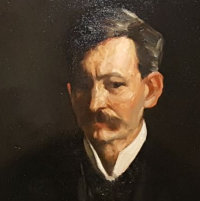
Clearly a charismatic leader and teacher, Henri's contribution to American art may rest more in the roster of artists he influenced—in the Ashcan School but also beyond—than in his own work. A realist at heart, he did much to combat American conservatism around the turn of the century. The name is pronounced "HEN-rye." 12.

An American genre painter, celebrated in his time, he was born in Charleston but studied in New York and later Paris (with Courbet, among others). He is best known for scenes of contemporary life and American nostalgia, rendered in minute detail. 10.
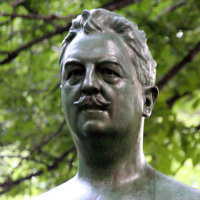
Born in the Channel Islands (though his mother told him Dublin), he went with her to Stuttgart, where he received training in cello and composition, leading to a career as an orchestral player and soloist, often in his own compositions. He came to the US in 1886 as principal cellist at the Met, and became conductor of the Pittsburgh Symphony in 194. His career trajectory changed completely in 1903, however, with the success of Babes in Toyland, the first of his many operettas. 9.
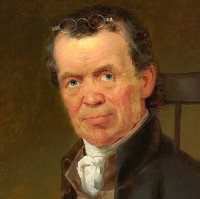
Although he began life as a sign-painter, his painting was mostly self-taught. His most frequent subject was The Peaceable Kingdom, a vision from Isaiah of a world in which all kinds of men and animals will live in peace with one another, an ideal in tune with his Quaker beliefs. 7.
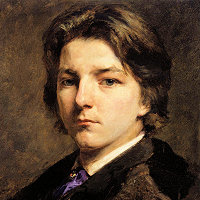
Holl painted mainly narrative works with strong emotions in a broad-brushed style with much chiaoscuro, though later in his unfortunately short life he turned to commissioned portraiture. He is thought to have died of overwork. 10.
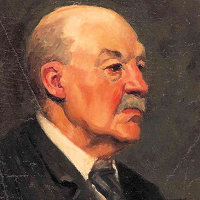
With JMW Whistler, one of the greatest American painters of his time, he too spent some years in Europe, but reacted with strongly designated areas of light and dark and almost heroic figures. He later retired in seclusion to the coast of Maine, painting the seascapes that were his favorite subject. 10, 11.
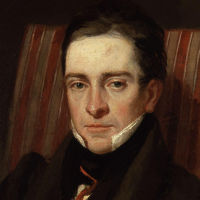
Called "the finest English poet between the generations of Shelley and Tennyson," Hood wrote both humorous and serious verse for various periodicals and a magazine that he himself published. For most of the last five years of his short life, he was confined to bed through ill health. 8.
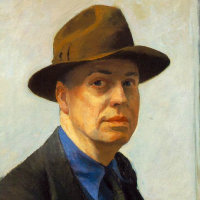
In all his career, Hopper maintained a balance between the social realism of his teacher Robert Henri, and the simplified forms of the abstraction that came into play soon after. Painting almost exclusively scenes from contemporary life, he managed to universalize the specific, and give everyday situations a powerful aura that transcended their literal subject. 12.
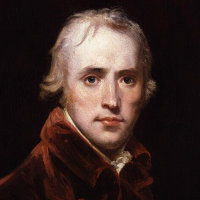
Hoppner's Io of 1785, an unusual subject for him, reflects his main strength as a portrait painter of much charm. 1.
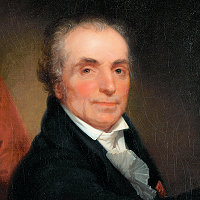
As the master of the neoclassical portrait bust, Houdon found commissions on both sides of the Atlantic, creating sculptures of George Washington, Benjamin Franklin, and Robert Fulton, as well as Diderot, Voltaire, Louis XVI, and Napoleon in his home country. 1.
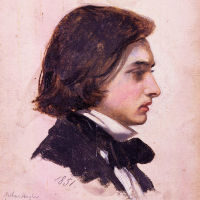
As a young man, Hughes was befriended by Rossetti, Hunt, and Millais, and though he never became a member of the Pre-Raphaelite Brotherhood, he painted similar subjects in a similar style. 12.
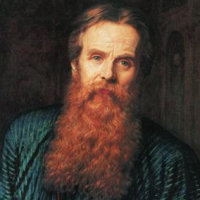
One of the founders of the Pre-Raphaelite Brotherhood, his paintings were noted for their vivid color, precise detail, religious or moral subjects, and profuse symbolism. His The Light of the World became one of the most reproduced paintings in the late 19th and early 20th centuries. 8.
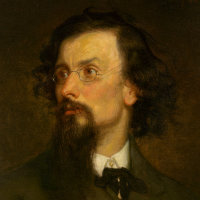
Inness was a transitional figure in 19th-century American landscape. Beginning as a second-generation Hudson River School artist, he then went to France to study with the painters of the Barbizon School. His style back home developed from their example, through Tonalism, to something very close to Impressionism, but all in his own personal terms. 2, 4.
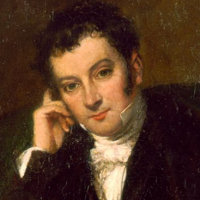
Irving was the writer of stories featuring such characters as Ichabod Crane and Rip van Winkle. He wrote a major biography of George Washington, and in later life served as US Ambassador to England and Spain. He was one of the first American authors to command an English readership, and to makea living from his writing. 5.
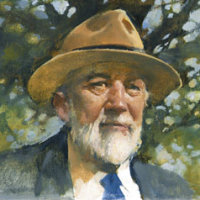
The son of a musician, Ives got a job as an organist at 14 and studied music at Yale. Going into the insurance business (and founding his own successful company), he continued to play and began to compose—pieces which are among the most original of his time, exploring simultaneity, polytonality, and unusual scales. 3, 11.
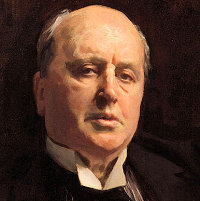
Born in New York, James traveled a lot with his family as a child, and settled in England in 1869. Many of his novels concern American expatriates in Europe, and the later ones especially have been hailed as the bridge to Modernism. His novella The Turn of the Screw (1898) is one of the most influential ghost stories of all time. 5.

Jennings was born and trained in Philadelphia, but spent most of his career in London, where he went originally (at Franklin's recommendation) to study with Benjamin West. His 1792 painting The Genius of America Encouraging the Emancipation of the Blacks, may be the first work by an American artist with an Abolitionist theme. [The image is by him, not of him.] 6.
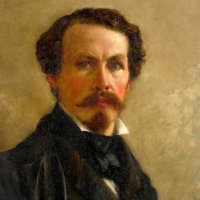
Born in Maine, Johnson started his career as apprentice to a Boston Lithographer. He later moved to Europe to study with Emanuel Leutze and others. Returning to America, he specialized in portraits and genre scenes, often taken from African American life. He was a co-founder of the Metropolitan Museum. 6, 8.

Though he began playing in the brothels of Saint Louis and Chicago, Joplin had already received a good musical education with the support of his mother. He made his name writing and performing piano rags, earning him the title "The King of Ragtime." His operas The Guest of Honor (now lost) and Treemonisha (1911) received little attention at the time, but the latter was revived to great acclaim in Houston in 1976. 11, 12.
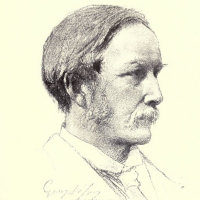
Though born in Dublin, Joy lived and worked in London. He specialized in historical scenes, including contemporary history—his Death of General Gordon, 1885 (1893) is his best-known work—but also did portraits and scenes of everyday life, such as The Bayswater Omnibus (1895). 11.
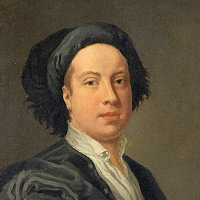
Kent was painter to the royal court, but his chief talent was as an architect, responsible for introducing the Palladian style to England, and as a landscape designer, essentially creating the characteristic English country park at Chiswick, Stowe, and elsewhere. 3.

Keppler was a scene designer and actor when he came to America from Austria in 1867. First in St. Louis and then in NYC, he began drawing cartoons which were immediately successful. He published them in his magazine Puck, employing other artists and his son Udo (1872–1956) when the workload became too heavy. 4, 7.
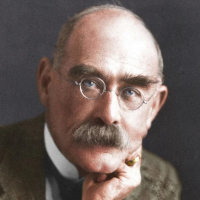
Kipling was born in India, the son of an educator. After boarding school in England, he returned to India and worked as a reporter, seven years that provided the background for most of his subsequent work. His story collection Plain Tales from the Hills (1888) did not sit well with the British colony, but made him a household name back in Britain, where he went from success to success, including being the youngest ever to win the Nobel Prize in Literature (1907). His masterpiece is probably the novel Kim (1901), but his output of poems and stories was prodigious. Hailed as the Poet Laureate of Empire in his time, his reputation declined with later reassessment of imperialism. 7.
GO TO: [A–C] [D–F] [G–K] [L–N] [O–R] [S–U] [V–Z]
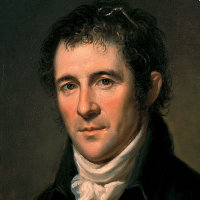
Latrobe emigrated to the United States in 1796. His works, all in a neoclassical style, include the US Capitol and the Baltimore Basilica. 3.
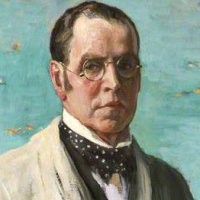
Lavery was born in Belfast and trained in Glasgow and Paris. He specialized in portraits and society genre pieces, but also painted some prominent occassions in the First World War, which earned him a knighthood (Sir John) in 1918. 11.
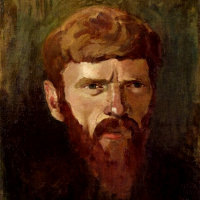
DH (David Herbert) Lawrence was described by EM Forster (who should know) as "the greatest imaginative novelist of our generation." He was little understood in his time, however, with his major novels Sons and Lovers (1913), Women in Love (1920), and Lady Chatterley's Lover (1928) all subject to censorship for their frank dialogue and explicit treatment of sex. As a result, he spent much of his career in virtual exile. He was also an eloquently lyrical poet and accomplished painter. 1.
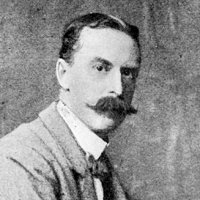
A late follower of the Pre-Raphaelites, Leighton specialized in narrative subjects from history or myth. Although a member of a family of artists, he was apparently unrelated to Frederic Leighton. 12.

Born in Paris, L'Enfant was recruited by the French playwright Beaumarchais to serve in the American Continental Army, where he became military engineer to George Washington, who later commissioned him to draw up plans for the new capital city bearing his name. Although he did not personally supervise most details of its execution, his plan is very largely still in place today. 3.
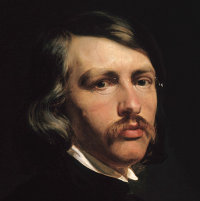
Leutze was born in Germany, came to America with his family at age 9, and began his career here. But he returned to Düsseldorf from 1841 to 1859, and it was there that he painted his iconic Washington Crossing the Delaware, modeled in part by other American painters who had come over to study with him. 7.
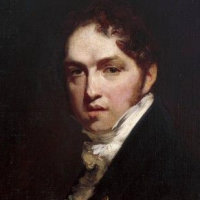
Lewis worked in a variety of genres, but he is best known for his naturalistic lanscapes and closely-observed studies of country people. 2.
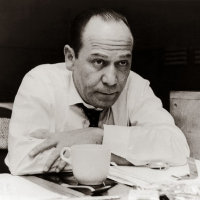
Loesser wrote over 700 songs in his 40-year career, together with the musicals Guys and Dolls, How to Succeed in Business Without Really Trying, The Most Happy Fella, and the film Hans Christian Anderson. 1.
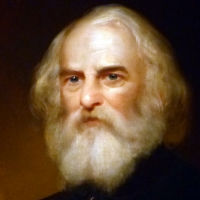
Longfellow was born in Maine, and taught at Bowdoin College and later at Harvard. His American themes and stirring diction made him the most popular poet of his day and earned him a reputation abroad. His Song of Hiawatha (1855) and similar poems employed the form of the Finnish Kalevala to create a similar Native American myth. 1, 7.
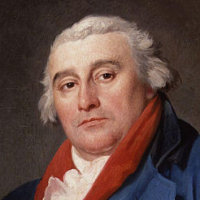
Born in Strasbourg, he settled in London in 1771, designing theatre sets for Garrick and Sheridan, publishing picuresque views of Britain, and painting large canvases mostly exalting the Sublime. 4.
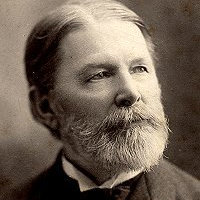
Lowry was an ordained Baptist minister who always insisted that preaching was his main profession. He is remebered today, however, as the writer of over 500 gospel hymns, including the perennial "Shall we gather at the river?" 8.
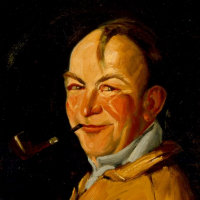
Luks was born in Pennsylvania to Polish and German immigrant parents. He began his career in vaudeville, then found success as a newspaper cartoonist. Turning to painting, he became a member of the Ashcan School, producing mainly crowded urban scenes, slightly exaggerated, but full of vigorous life. 12.
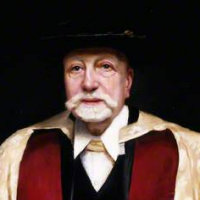
A violinist, Mackenzie trained in Germany and began his career in orchestras there. He later enrolled at the Royal Academy of Music in London—he would eventually become its Principal—and began composing while continuing to play the violin as a living. Many of his works have a Scottish theme, including three Scottish Rhapsodies (1880, 1881, and 1911) for orchestra. 2.
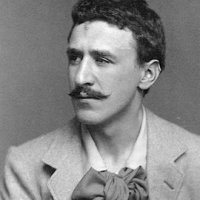
Born in Glasgow and trained at the Glasgow School of Art (whose new buildings he later designed), Mackintosh developed a European reputation as one of the leading architects of the art nouveau movement. Unfortunately, few of his buildings (often executed in collaboration with his wife, Margaret Macdonald) now survive intact, and his career dwindled to almost nothing around the time of WW1. 12.
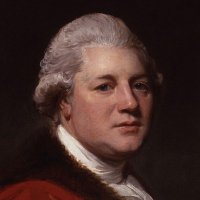
Macpherson leapt to fame with the publication of the epic Fingal in 1761, supposedly the work of the Gaelic poet Ossian, discovered and translated by him. Other works by Ossian followed. Although this was later exposed as a massive forgery, the mythical world of Ossian sparked something in the early Romantic fantasy, bringing worldwide fame to his supposed discoverer. 2.
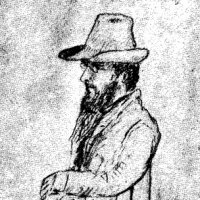
Though born and trained in Baltimore, Mayer lived in Paris 1872–70. His work in Maryland includes two paintings in the Annapolis State House and a large group portrait of the Founders of the Baltimore and Ohio Railroad. 8.
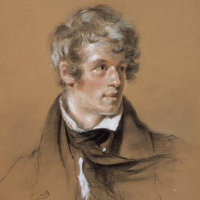
Born in Glasgow, McCulloch's artistic career took off slowly, but by 1838 he had obtained inlfuential patrons, been elected to the Royal Scottish Academy, and moved to Edinburgh. His preferred subjects were the West of Scotland and Highlands, which he depicted in an increasingly vigorous style with strong effects of light and color. 2.
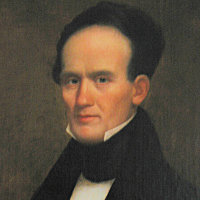
Growing up on the Ohio frontier, McGuffey began working as a teacher in his teens. Years later, when he was already a Professor of Ancient Languages at Miami University in Ohio, and an ordained Presbyterian minister, he was recommended by Harriet Beecher Stowe to write a series of school Readers for children. These are still used by homeschoolers today, largely on account of the strong moral lessons they teach along with basic literacy. 8.
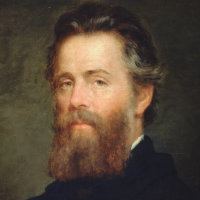
Melville's Moby-Dick (1851) is a landmark in literature (not just in America) for its scope, its wealth of detail, and the apocalyptic scale of its vision. Although he wrote nothing else of this size, his earlier novels based on his time in the South Seas, his long short stories, and above all his posthumously published Billy Budd show a deep penetration into character and morality. 5, 8.
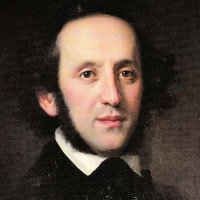
A major figure in the Romantic movement and a precocious talent, he wrote many of his best-known works (such as the Midsummer Night's Dream overture) while still in his teens. By virtue of his ten separate residencies in England or Scotland, and the works he premiered there, he almost qualifies as a virtual British composer. 2, 9.
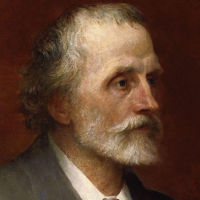
Meredith was a respected poet and relatively minor novelist of the Victorian era. His autobiographical sonnet squence Modern Love (1862), however, broke new ground in telling of the break-up of a marriage in psychologically realistic detail. 5.
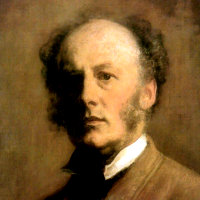
Millais was, with DG Rossetti and William Holman Hunt, one of the founders of the Pre-Raphaelite Brotherhood in 1848. At first noted for his highly realistic treatment of religious and literary subjects, he later adopted a more sentimental style, with which he was hugely successful. 10.

Several of Morgan's works in mural and mosaic are in the Victoria and Albert Museum, but apart from his painting of Prime Minister Gladstone riding a London omnibus, One of the People (1885), I can find out little more about hism. 11.

Morland specialized in rustic subjects and landscapes, often painting for the print marked. His Slave Trade of 1791 is something of a departure from his usual style. 6.
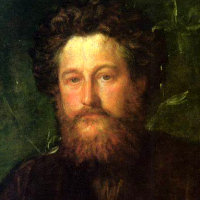
Morris was a textile designer, poet, and social activist, the most prominent figure in the 19th-century Arts and Crafts movement. He preached a return to simplicity, inspiration taken directly from nature, and hand-crafted rather than machine-made objects. All the same, the firm he founded to produce his designs remained a commercial force for over a century. 3, 12.
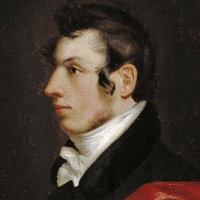
Morse had a successful career as a portrait painter, and became Professor of Art at New York University. Always curious about technical things, he introduced the Daguerreotype into America, and developed a single-wire telegraph system, greatly simplifying European models. He was co-inventor of the Morse Code, which is still used in telegraphy. 4.
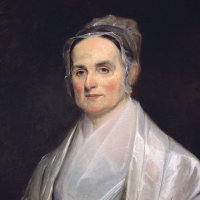
Mott was a Quaker minister and ardent abolitionist. As a delegate to the 1840 Anti-Slavery Convention in London, she met Elizabeth Cady Stanton, and together they organized the Seneca Falls Convention for Woman's Rights in 1848, a landmark event in American feminism. 10.
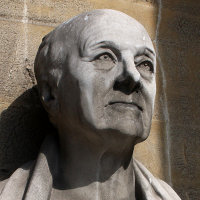
The leading architect of the Georgian and Regency periods, Nash was largely responsible for establishing the classical face of London, with Regent Street, the Regent's Park terraces, Buckingham Palace, and Marble Arch. He also designed several buildings in non-classical picturesque styles, most notably the Indian-inspired Royal Pavilion at Brighton. 3.

Nasmyth studied for two years in Italy, and the influence of classical artists like Claude can be seen even in his topographically accurate depictions of his native Scotland. But in the background of his standing portrait of his friend Robert Burns, he gave his Romantic side full play. He was also active as an architect, garden designer, and inventor. 2.
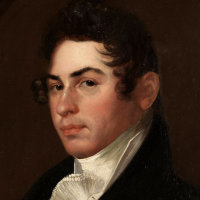
A pupil of Thomas Sully, Neagle became the most fashionable portrait painter in Philadelphia. The realism of his Pat Lyon at the Forge is therefore not typical of him, but was done at the request of the sitter. 1.
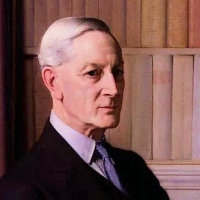
After studying at Clifton College and Oxford, Newbolt became a lawyer and practised as a barrister until 1899. He also worked for the government, producing the influential Newbolt Report on the teaching of English in 1921. He was knighted in 1915. He is best known, however, as the author of the once-popular patriotic poems "Vitai Lampada" and "Drake's Drum." 11.
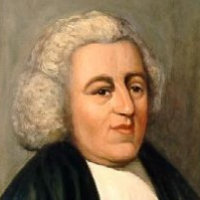
Author of the hymn "Amazing Grace," Newton was originally a man of no great religious faith. After serving with the Royal Navy, he became a captain and then owner of a fleet of slave ships. When wrecked off the coast of Ireland, his desperate prayer was answered, and he began a spiritual change, devoting himself to God, giving up the slave trade, and studying for the priesthood. 6.

Born and trained in Dublin, Nicholls moved to London in 1864, where he specialized in group genre scenes, but continued to exhibit in both cities. 11.
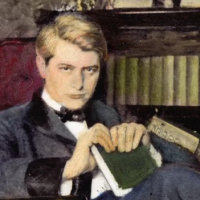
Norris studied painting for two years in Paris, but the influence of the realist novels of Zola caused him to take up novel-writing as a profession. He produced McTeague (1899) and several other works critical of the capitalist society, before dying of a ruptured appendix at the age of 32. 12.
GO TO: [A–C] [D–F] [G–K] [L–N] [O–R] [S–U] [V–Z]
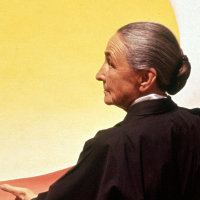
Her near-abstract enlargements of flower and plant forms established her as a pioneer of American modernism. She settled in New Mexico for the last 40 years of her life, adding desert landscapes and bleached skulls to her repertoire of forms that she would revisit in numerous variations. 12.

With his partner Calvert Vaux, Olmsted won the competition in 1858 to develop Central Park in NYC, taking the natural features of the terrain and landscaping it to create the astonishing range of scenery that we know. Olmsted, who coined the term “landscape architect,” went on to design not merely parks in other cities, but connected park systems, feeling strongly that his work had a social purpose as well as a practical one. 11.
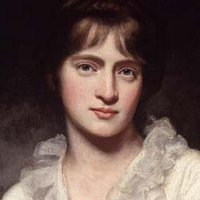
Amelia Alderson was raised in an activist family, and became friends with Mary Wollstonecraft and others. In addition to writing several novels, she was also an active polemicist for the Abolitionist cause, writing the poem for children, "The Black Man's Lament" of "How Sugar is Made." The image is a detail of a portrait by her husband, John Opie. 6, 10.
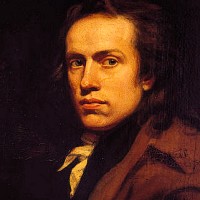
Originally hailed as an untaught genius, Opie had a successful career as a portrait painter, and became a professor at the Royal Academy, even though he failed to retain his early freshness. 10.
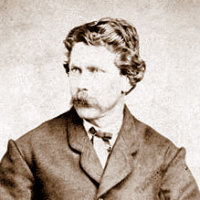
Very little is known about O'Sullivan's early life except that he was apprenticed as a teenager to photographer Matthew Brady. During the Civil War, he was associated with Brady once more, and many of the iconic photographs—such as the one of the Gettysburg dead—once attributed to his master are now acknowledged to be his. In later years, he produced some striking views of the American West. 6.

A precocious artist, who exhibited at the Royal Academy at only 14, he nonetheless went his own way with a mystical and strongly religious approach to landscape, clearly influenced by William Blake, whom he met as a young man. 2.
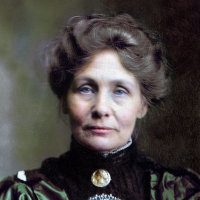
Emmeline Pankhurst, later aided by her daughters Christabel and Sylvia, all women of status and privilege, galvanized the British suffrage movement in the years before WW1 by organizing mass demonstrations and using the technique of civil disobedience to get themselves arrested and endure imprisonment and ill-treatment as martyrs for the cause. 10.

Patmore is best known for his long poem The Angel in the House, in praise of his wife Emily, published serially between 1854 and 1862. Though decried today, it became immediately popular as an expression of the Victorian ideal of a perfect marriage. 10.
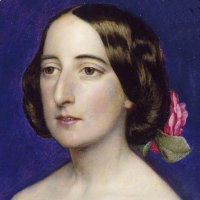
The wife of poet Coventry Patmore, and thus the woman eulogized (and fossilized?) in his poetry sequence The Angel in the House, Emily Patmore was also a writer, publishing some novels and poems, and a handbook for domestic servants. 10.
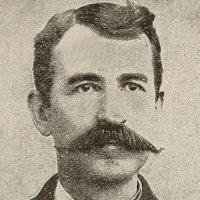
Paull "was a minor American composer, arranger, and sheet music publisher" [Wikipedia]. He specialized in marches. 12.
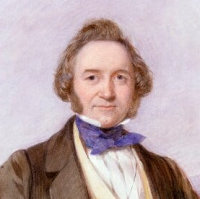
Paxton faked his age as a teenager to obtain employment as an under-gardener at Kew. His energy impressed the Duke of Devonshire, who made him his head gardener at Chatsworth at the age of 20. There, among other things, he developed the cultivar of banana most commonly eatern today, and built a revolutionary greenhouse to house it. Such experiences put him in a position to propose a giant glasshouse for the Great Exhibition in 1851—the Crystal Palace—which in turn catapulted him to a career in more conventional architecture. 3.
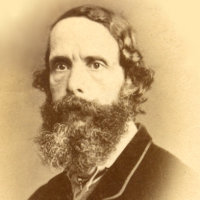
A successful landscape painter of the Victorian era, Percy was trained by his father, Edward Williams, but changed his name at the beginning of his career to disinguish himself from his father and four brothers, all of whom also painted landscapes; two of his brothers also changed their names. 9.
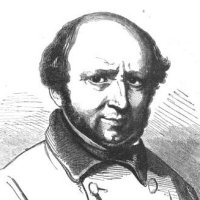
Born in Naples, he moved to America in 1915, living in Baltimore and several cities in Pennsylvania before moving in 1824 to Washington, where he was involved in several projects for the sculpture of the US Capitol. 7.
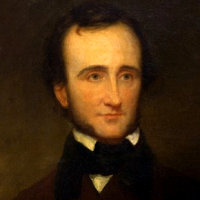
Poe was known for his poetry and especially for his short stories which developed the American Gothic tradition of the macabre and virtually invented the literary mystery. He was also the American author of his time most in tune with European practice, especially in France, where he was very popular. He was, however, continually wrestling with drug addiction, and died at the age of 40. 5.
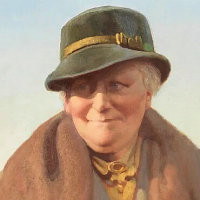
The author and illustrator of 23 highly successful children's books, beginning with Peter Rabbit in 1902, Potter also published around 40 other books, achieved a scientific reputation as a mycologist, and later as an environmentalist, buying several farms in the Lake District adjacent to her own to preserve the landscape. Her registration of Peter Rabbit as a doll and license of her characters in other media made her a pioneer of character merchandising as an entrepreneur. 12.
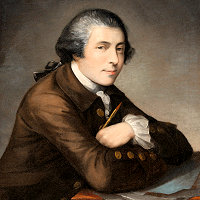
A painter from Pennsylvania, Pratt escorted his cousin to London in 1764 for her marriage to Benjamin West, and remained there for over two years as West's pupil before returning home. 1.
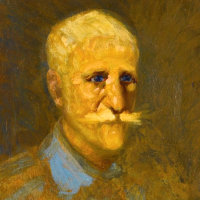
Born in Canada, Prendergast was a member of the group of artists aound Robert Henri, but developed a lighter, more colorful style than the others, influenced particularly by developments in France. At first, he painted mainly in watercolor, but later moved to oil painting and prints. 11.

A convert to Catholicism, Pugin was an evangelist for the moral authority of the Gothic style, as representing an age of piety and communal support, ideas he put forward in his 1836 book Contrasts, setting his vision of an idealized 15th century against the sterility of his own time. He was responsible for all the detail in Charles Barry's rebuilt Houses of Parliament. 3.
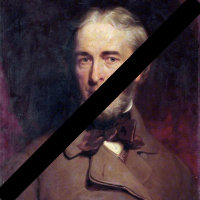
WIkipedia: Quidor was an American painter of historical and literary subjects. He has about 35 known canvases, most of which are based on Washington Irving's stories about Dutch New York. [The image is period-appropriate placeholder; I can't find his portrait.] 5.
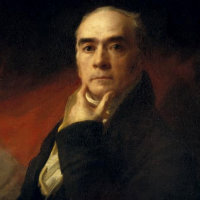
The leading Scottish portrait painter of his time, noted for the forthright quality of his technique, giving his figures an outstanding presence. 1.
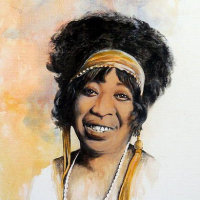
Born Gertrude Pridgett, and performing since her early teens, she became known as "Ma" Rainey after her marriage to Will "Pa" Rainey in 1904. They toured together, performing blues songs, many of which were her own compositions, including the standard Ma Rainey's Black Bottom. As one of the first blues singers to record (beginning in 1923), she earned the title "Mother of the Blues." 12.
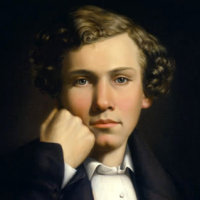
A noted if short-lived artist in pre-Civil-War America, Ranee painted scenes from everyday life, and was one of the first painters to depict the expanding West. 7.
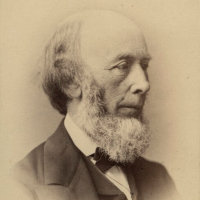
Although elected to the Royal Academy as a painter, he began his career as a designer of glassware and objets d'art, and worked for much of his life as an administrator in various museums and educational institutions. 8.

Renwick was trained as an engineer, but pivoted to architecture, a subject he had studied by observation in Europe but was never formally taught. He won the competition for the original Smithsonian Building in 1846, and its Gothic-influenced design helped launch the Gothic Revival in America, including his own St. Patrick's Cathedral in NYC (1858). 3.
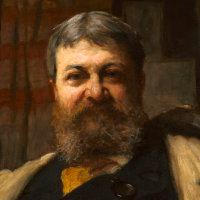
After studying engineering at Harvard and Tulane, Richardson switched to architecture and moved to Paris to study. He moved to New York in 1865 and struggled to launch a career. This eventually took off in the early 1870s, when he began to experiment with the massive masonry and limited ornamentation of early French medieval architecture, developing the highly original style commonly known as "Richardson Romanesque." 3.
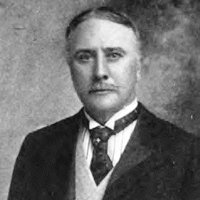
The son of an officer on the Cunard Line, Rideing himself made many trips across the Atlantic, writing articles and books about Britain from an American point of view. 4.
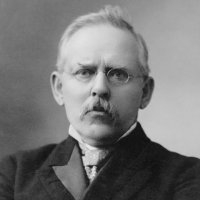
Riis arrived in the US in his early 20s as a carpenter. Often destitute, and from time to time sleeping rough in alleys, he eventually found work as a journalist. These experiences led to his later fame as a social crusader, writing about the urban underbelly and photographing it (one of the first to use flash) for his 1890 book How the Other Half Lives, 4.
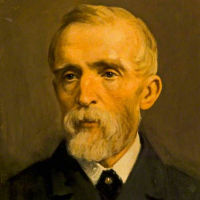
Ritchie's two paintings of crowd scenes in London parks made a good impression at the Royal Academy exhibition of 1858, but I can find out little more about the artist. [The image is probably not of the painter.] 11.
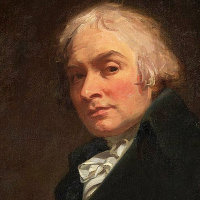
Born in the Northwest of England, Romney struggled when he came to London in 1762, as he seemed to have earned the enmity of Benjamin West, and was never invited to join the Royal Academy. All the same, he became one of the most successful portraitists of his time, somewhat Romantic in nature, and especially inspired by the actress Emma Hamilton (who was, however, the mistress of Admiral Nelson). 1.
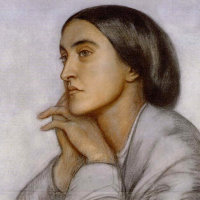
Christina was the younger sister of Dane Gabriel Rossetti and the model for several of his paintings. She began publishing her poetry in 1848. Although remembered for his Christmas carols "Love Came Down at Christmas" and "In the Bleak Midwinter," her popularity declined after her death, but later commentators point to the extraordinary language and psychosexual suggestion in works like Goblin Market (1862), possibly inspired by her volunteer work at a Home for Fallen Women. 10.
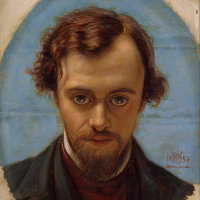
A member of an unusually talented and literary family (father a Dante scholar, sister Christina a poet), he hesitated before devoting himself to painting, but then in 1848 became the co-founder and virtual leader of the Pre-Raphaelite Brotherhood, which influenced the course of Victorian art for the rest of the century. Although he became mannered in later life, his earlier works have a remarkable freshness and sincerity. 10.
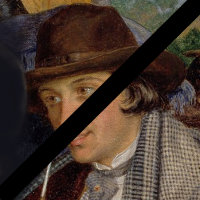
His large genre painting To Brighton and Back for 3/6d (1859, Birmingham) is a valuable record of the social life of its period, but very little is known of his life. [The image is a detail of the said painting, not a self-portrait.] 11.
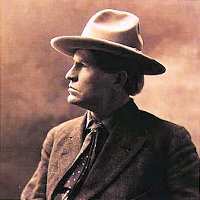
Sometimes known as "the cowboy artist," Russell painted over 2,000 depictions of the American West including several bronze sculpture. He went beyond painting to become an ardent activist for Native American rights. 7.
GO TO: [A–C] [D–F] [G–K] [L–N] [O–R] [S–U] [V–Z]
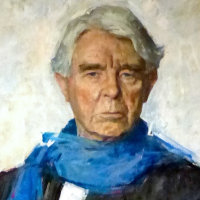
Sandburg won two Pulitzer Prizes for his poetry and one for his biography of Abraham Lincoln. He began his writing career as a journalist on the Chicago Daily News, and many of his poems paint a realistic, but basically optimistic, portrait of city life. 12.
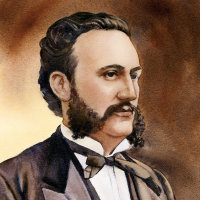
"Sankey was an American gospel singer and composer, known for his long association with preacher Dwight L. Moody in a series of religious revival campaigns in America and Britain during the closing decades of the 19th century. Sankey was a pioneer in the introduction of a musical style that influenced church services and evangelical campaigns for generations." [Wikipedia] 8.
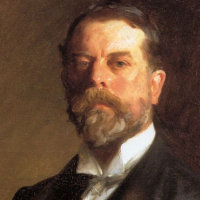
Sargent was born in Florence, the son of wealthy cultured parents, and much of his career was spent in Europe, although his rising fame as the preeminent society portraitist of his day also took him back to America. He is said to have hated portraiture, though, and diversified into landscapes and watercolors for his own satisfaction. 4, 10.
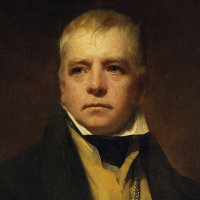
Scott's historical novels, all set in his native Scotland, spoke to the Romantic spirit and were immensely popular throughout Europe, inspiring many adaptations such as Donizetti's Lucia di Lammermoor. 2.
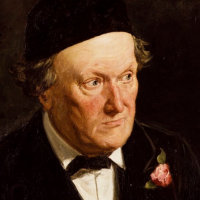
Born into an Ediburgh family of artists, Scott moved to London, where he became a member of the Pre-Raphaelite Brotherhood. A post as head of the art school in Newcastle-on-Tyne from 1843 to 1864 brought him into contact with the industrial subjects which would form a significant part of his work. 4.
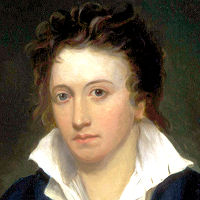
With his friend Byron, Shelley was the outstanding English Romantic poet of the generation after Wordsworth and Coleridge. Politically engaged, and intellectually acute, he was an avowed atheist, a stance that got him expelled from Oxford, and kept him out of England for much of his short career. He drowned in a boating accident off Livorno at the age of 29. His second wife, Mary Godwin Shelley, was the author of Frankenstein. 2, 10.
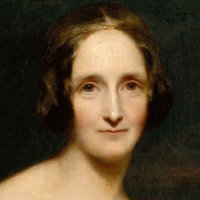
The daughter of the political philosopher William Godwin and the feminist activist Mary Wollstonecraft, Shelley fell in love with the poet Percy Bysshe Shelley when he was already married and eloped with him to the continent to avoid ostracism at home. She wrote her most famous novel, Frankenstein (1818), in response to a competition with Lord Byron, John Polidori, and her lover during a rainy holiday in Switzerland. 10.
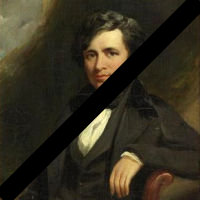
George "Sidney" Shepherd was an draughtsman and watercolorist, known mainly for his view of English towns. [The image is a placeholder only.] 11.
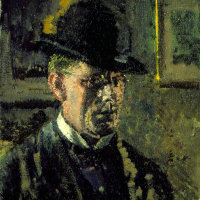
Sickert was born in Munich of a Danish-German father and an Anglo-Irish mother, who settled in London in 1868. Although his father and grandfather were both painters, Sickert started as an actor, touring with Henry Irving. But in 1881 he left the stage and studied painting with Whistler and Degas, developing a personal style of dark-toned realism that made him one of the most influential British artists at the turn of the century. 11.

Lizzie Siddal was the go-to model for many of the Pre-Raphaelites, including for Millais' Ophelia and many paintings by Dante Gabriel Rossetti, who became her husband. Siddal was also a poet, and a painter herself. Scholars have been divided on how many of her few surviving works were collaborations with Rossetti or entirely her own. 10.
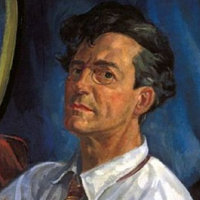
Sloan was one of a number of realist painters in New York in the early 20th century popularly known as "The Ashcan School" because of their fondness for less elevated subjects. Sloan himself was a committed Socialist. 12.
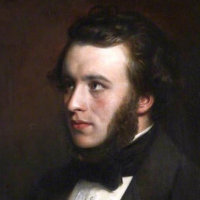
Born in Glasgow, Smith at first went into the family fabric business. The success of his first book of poems in 1853 led to his appointment as Secretary of Edinburgh University. There he met painter Horatio McCulloch who introduced him to the Isle of Skye and his future wife, leading him to spend increasing periods on the island. 4.
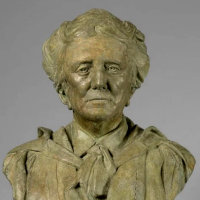
Dame Ethel Smyth was known as much for her political and feminist activism as for her music, which was strongly influenced by her training and early career in Germany. Her best-known opera, The Wreckers (1906) contains some excellent music. 10.
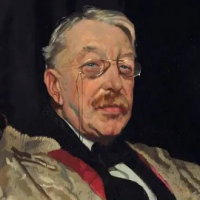
Born in Dublin, but educated in Cambridge, Stanford is most associated with academic positions, as Director of the Royal College of Music and Professor at Cambridge. A demanding teacher, his pupils included Coleridge-Taylor, Holst, and Vaughan Williams. 9.

Shocked by the exclusion of the female delegates from the 1840 Anti-Slavery Convention in London, which he attended with her Alolitionish husband, Stanton dedicated the rest of her life to fighting for women's rights, including organizing the landmark Seneca Falls Convention in 1848, and then teaming with Susan B. Anthony to prepare the case for female suffrage, which was not obtained until after her death. 10.
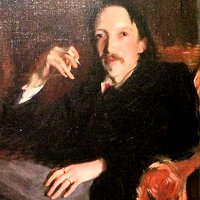
Stevenson qualified as a lawyer in Edinburgh, but made his living by writing instead. A frequent traveler (often occasioned by the needs of his weak lungs), he lived at various times in Southern England, continental Europe, the United States, and finally Samoa. Many of his works, some of them for children like Treasure Island (1883), involve travel and adventure, though his horror at the exploitation of the South Seas turned him from romance to realism in his last years. 5.
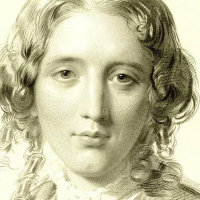
Living in Cincinnati, where he father was President of a theological seminary, Stowe became aware of slaves escaping by means of the Underground Railroad. Becoming passionate in the cause of Abolition, she published Uncle Tom's Cabin in 1852, a book whose immediate popularity energized the forces that ultimately led to Emancipation and the Civil War. 6.
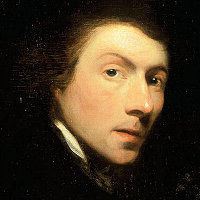
Although a patriot, Stuart, who was born in Rhode Island, went to Britain in 1775 and studied with Benjamin West, mking his name with his 1782 full-length portrait of Sir William Grant (The Skater). He returned to the US in 1793 (leaving many commissions unfinished) and there became the de facto presidential portraitist, painting all six of the first Presidents. 1.
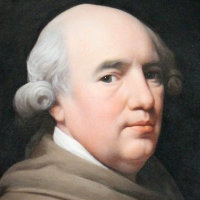
Originally self-taught as a painter, Stubbs also pursued studies in anatomy, of humans and later on his own initiative of the horse, publishing an Anatomy of the Horse in 1776. While most of his paintings are portraits of horses commissioned by their owners, Stubbs also did some subjects such as the Lion Attacking a Horse of 1770 which are clearly in the spirit of early Romanticism. 2.
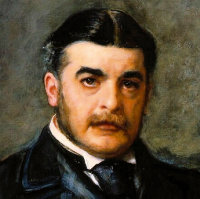
Sullivan essentially had two careers: as a classical composer of orchestra music and oratorios on suitably uplifting subjects, and as the musical partner to W. S. Gilbert on the highly successful series of Savoy Operas from HMS Pinafore (1878) to The Gondoliers (1889) and beyond. History only remembers him in the latter role. 9.
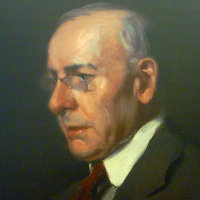
Sullivan moved to Chicago in 1873 to join building boom following the Great Fire of 1871. After various short residencies to learn his craft, he became the partner of Dankmar Adler in 1880. Together, they designed many theater buildings and commercial blocks that became some of the first skyscrapers. He is credited with the phrase "form follows function," but his own relatively austere forms were illuminated with details that are pure are and nothing to do with function at all. 3.
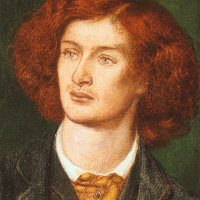
Swinburne is usually remembered as a poet, though he also wrote novels, plays, and criticism. He was unafraid to treat deviant sexual subjects, which aligns him with the Decadent school in England and France. His work includes two poems about Proserpine in 1866. 12.
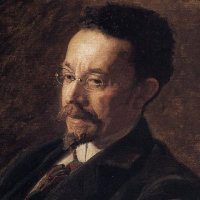
Born in Pittsburgh, Tanner trained in Philadelphia then moved to Paris in his early thirties, achieving early success in Biblical subjects exhibited at the Salon. He and his wife (also American) settled in France for the remainder of their lives. The recipient of an honorary Légion d'honneur, Tanner is notable as the first African American artist to achieve international renown. 6, 12.

Known for his lyrical poems and his Arthurian epic Idylls of the King, Tennyson was appointed Poet Laureate to Queen Victoria in 1850 and held the position until his death. He adopted his characteristic tone of elegaic retrospection relatively early, and carried it through a long career that established him as the most resonant voice of the Victorian era. 5, 7, 12.

Thayer was a Harvard-educated journalist and humorous writer whose enduring claim to fame is his 1888 ballad "Casey at the Bat," the best-known baseball poem ever written. 11.
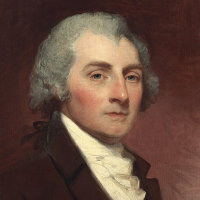
Born in the West Indes on a sugar plantation owned by his parents, Thornton returned to England for his schooling and eventually qualified as a physician. He emigrated to America in 1786, and began to explore other interests, including efforts to expiate his family's role in slavery. He won the competition for the design of the new US Capitol, and it is for that he is now best remembered. 3.
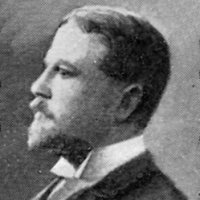
After training at the Swedish Military Academy, he enlisted in the French Foreign Legion. When he moved to the US in 1873 and began work as a newspaper illustrator, it was natural that he should show himself especially skilled in military subjects, which became the cornerstone of his eventual career. 6.
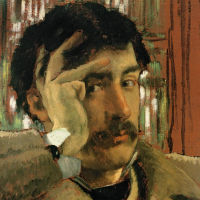
Tissot had a highly successful career as a society painter in Paris before he moved to London in 1871. His works, which now belong firmly in the history of British art, mostly depict affluent subjects in contemporary situations with a light narrative content. 10.
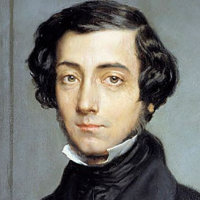
Tocqueville was a French aristocrat a liberal politician. His two-volume Democracy in America (1835 and 1840) is valuable not only as an objective critique of the American system from an outsider, but a foundation work in sociology and political science. 4, 8.
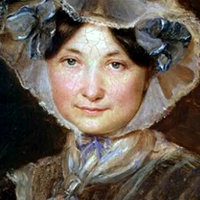
Now eclipsed by the fame of her novelist son Anthony, Fanny Trollope was a highly regarded writer in her own right. The book that first caught the attention of the public was Domestic Manners of the Americans that she published in 1832, following the failure of a four-year attempt to settle in the American midwest. 5.
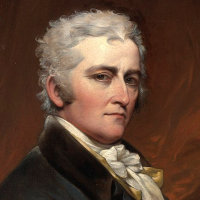
Trumbull fought in the American War of Independence, and founded his career on depictions of battles and other key historical events. He spent several years in London working with Benjamin West, and was even imprisoned there for several months for his part in the Revolution. 1.
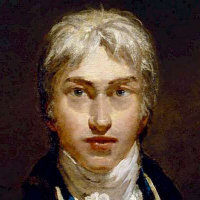
Rivaled only by Constable, Turner was the dominant British landscape painter of the first half of the 19th century, he started his career with topographical views intended for engraving, and ended with works whose subjects were dissolved in veils of paint and light. 2, 4, 6.
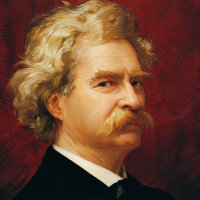
Lacking success in his first careers as a river pilot and then as a mining engineer, he turned to journalism, then to novel writing (e.g. The Adventures of Huckleberry Finn, 1885), and is hailed variously as "greatest humorist this country has produced" (obituary) and "the father of American Literature" (Faulkner). 1, 8.
GO TO: [A–C] [D–F] [G–K] [L–N] [O–R] [S–U] [V–Z]
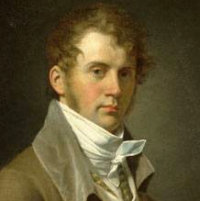
After painting a portrait of Aaron Burr, the statesman virtually adopted him, sending him for five years to Paris to study, and giving him an apartment in his own home. Vanderlyn's career is chiefly noted for his portraits of other political figures, though he did some narrative paintings as well. 7.
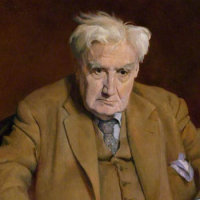
Associated with the English folk song revival, he was more than anybody responsible for giving English music its national voice. He wrote nine symphonies and numerous vocal works, including the one-act opera Riders to the Sea. His first name is pronounced "Rafe." 9.
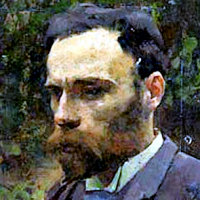
Beginning in an academic manner, he became drawn to Pre-Raphaelite style and subjects, with illustrations from Shakespeare, Greek myth, and Arthurian legend. 12.
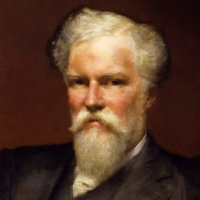
Waterhouse was the most succesful late Victorian architect, responsible for huge projects such as the Manchester Town Hall (1866), the Museum of Natural History (1873), and numerous collegiate buildings at Oxford, Cambridge, and several of the new universities. 3.
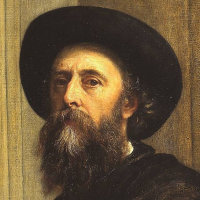
Watts, who once said "I paint ideas, not things," was a British pioneer of the Symbolist movement, and many of his works have allegorical overtones. He was briefly associated with the Pre-Raphaelite Brotherhood, and influenced by DG Rossetti, and even more briefly married to the teenage Ellen Terry, 30 years his junior; Choosing, his 1864 painting of her, remained her favorite portrait. 8.

Born in London, Waud emigrated to America in 1850, and took up work as an illustrator for magazines. In the Civil War, he attended every engagement of the Army of the Potomac between Bull Run and Petersburg, capturing the action in vivid sketches as well as producing drawings to be turned into formal engravings. 6.
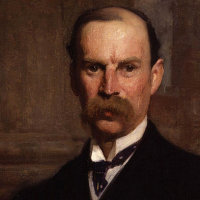
The architect of the Victoria and Albert Musuem, Sir Aston Webb may not have been London's most original figure, but his redesign of the Royal Mall, together with Admiralty Arch, Victoria Memorial, and façade of Buckingham Palace have left a lasting stamp on the geography of ceremonial London. 3.
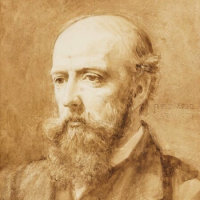
Webb was the principal architect of the English Arts and Crafts movement, advocating traditional materials and design. He worked with Burne-Jones, the two Rossettis, and William Morris, for whom he built the Red House in Bexleyheath, a virtual manifesto of their shared principles. 3, 12.
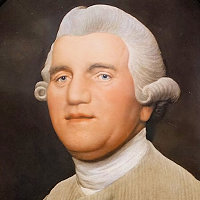
Wedgwood's neo-classsical designs and the new materials he developed brought him a fashionable clientele, but he was also an innovator in marketing for the wider public, and the firm he founded is still going strong. He was an ardent abolitionist, producing at his own expense iconic plates and medallions with the words "Am I not a Man and Brother?" 6.
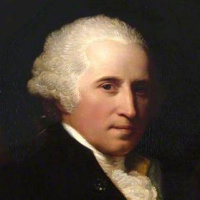
Although he set up as a portraitist, it was as the painter of historical and mythological subjects that he made his name. A founding member of the Royal Academy in 1768, he became its president in 1792. His London studio became a Mecca for American artists studying abroad. 1, 7.
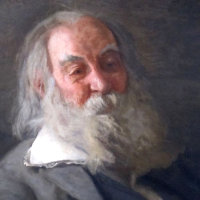
Writing in a free verse style that would influence successors in the next century, Whitman combined a Transcendantalist philosophy with an acute observation; his later works were criticized for their overt sexuality. He worked as an army clerk and volunteer nurse in the Civil War. 6, 12.
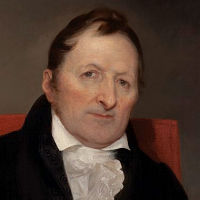
Whitney's invention of the cotton gin in 1793 was crucial to the economy of the Antebellum South. It also established him as an inventor, so that when (totally without experience) he contracted to produce rifles for the US Government in 1801, his offer was accepted. His solution to the problem was to build the guns out of interchangeable parts, the founding principle of all subsequent mass production. 4.

The nine books in Little House on the Prairie series (1932–43) are all loosely based on Laura Ingalls' childhood moving with her pioneer settler family to Wisconsin, Minnesota, and Dakota Teritory. 4.

Although of peasant stock, he became drawing master to the Margravine of Baden in 1828. Her father supported his further study, and he eventually became the most sought-after court painter in Europe in the mid-19th century. 8.
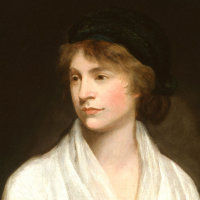
Mary Wollstonecraft, wife of the anarchist philosopher William Godwin and mother of the future Mary Shelley, was one of the most original women of her age, breaking numerous conventions of decorum. She was a first-hand witness of the French Revolution, and published an analysis of its moral significance. Her most important work for subsequent generations, however, was A Vindication of the Rights of Woman (1792), a foundation document of feminism. 10.

With the joint publication of the Lyrical Ballads with Coleridge in 1798, Wordsworth co-founded the English Romantic movement, and continued to dominate it for decades with poetry of his native Lake District and his doctrine of capturing experience direct from Nature for later use as "emotion recollected in tranquility." 2, 4.
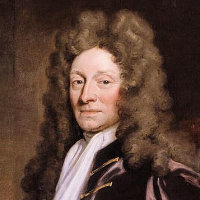
Sir Christopher Wren was a mathematician, physicist, and astronomer before devoting himself full-time to architecture; he was a founder of the Royal Society, and for two years its president. The biggest boost to his career was the commission to rebuild 54 London churches after the Great Fire of 1666—among them his masterpiece, St. Paul's Cathedral. 3.
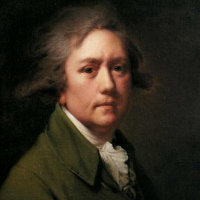
A highly original painter, and important precursor of Romanticism, he adapted the candlelight and moonlight genres of Dutch painting to English landscape subjects and scenes relating to the Industrial Revolution. 4.

Wright designed over 1,000 buildings, including the iconic Fallingwater (1937) and Guggenheim Museum (1959). Beginning with the Ward Willits House in Chicago (1902), he developed what became known as the Prairie School of architecture, featuring long low verticals and close integration of buildings with their environment, principles that he developed further in connection with Broadacre City, a pioneer of planned suburban development. 12.
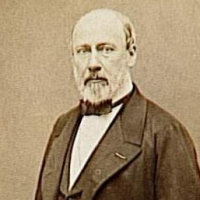
Wyld started careers as a dipomat and a wine merchant, then turned to painting. With the support of the French painter, Horace Vernet, he spent time in Italy and France, painting mainly Orientalist subjects. But on visits back to Britain, he gained the patronage of Queen Victoria, and painted landscapes and watercolors in a rather simpler style. 4.
